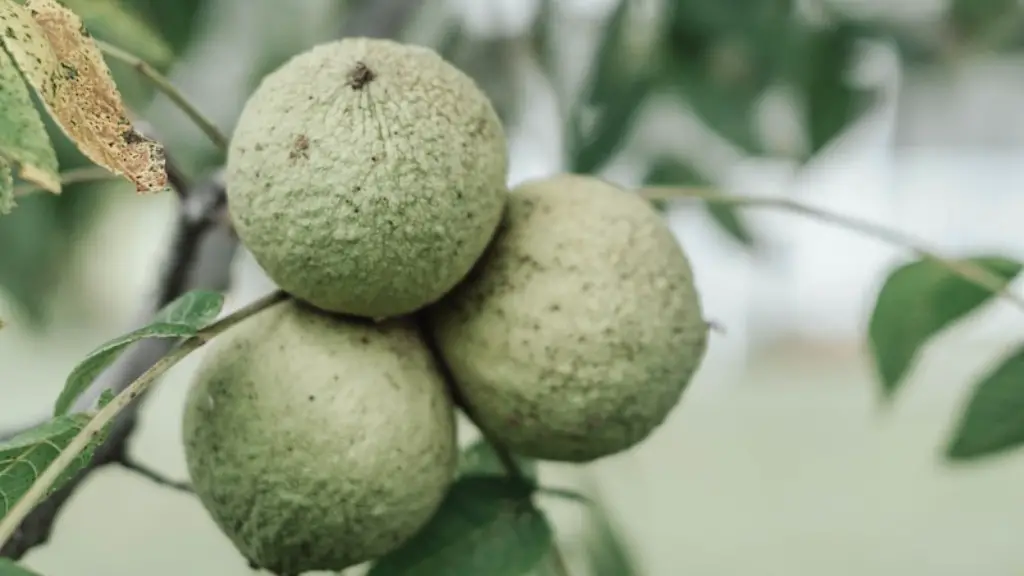An allergic reaction to tree nuts is usually caused by an allergy to the protein found in the nut. The reaction can vary from a mild reaction, such as a rash, to a severe reaction, such as anaphylaxis, which can be life-threatening.
Tree nut allergies are caused by an immune system reaction to tree nuts. The tree nuts that cause the most severe reactions are walnuts, Brazil nuts, hazelnuts, pistachios, almonds, and pecans.
What nuts are included in the tree nut category?
The main difference between tree nuts and peanuts is that tree nuts grow on trees, whereas peanuts grow underground and are considered legumes. Tree nuts include almonds, Brazil nuts, cashews, hazelnuts, pecans, pistachios and walnuts.
Tree nut allergies are among the most common food allergies in both children and adults. The six tree nut allergies most commonly reported by children and adults are allergies to walnut, almond, hazelnut, pecan, cashew and pistachio. Allergies to these tree nuts can cause a range of symptoms, from mild to severe, and can even be life-threatening. If you or someone you know has a tree nut allergy, it’s important to be aware of the symptoms and to know what to do in case of a reaction.
How long after eating tree nuts will an allergic reaction occur
It is important to be aware of the signs and symptoms of food allergies, as they can range from mild to severe. The most common food allergy signs and symptoms include tingling or itching in the mouth, hives, swelling of the face, lips, and throat, difficulty breathing, and gastrointestinal symptoms such as abdominal pain, diarrhea, and vomiting. If you experience any of these symptoms after eating, it is important to seek medical attention immediately, as severe reactions can be life-threatening.
Nut allergies are caused by the proteins in the nut, which are diverse and include the seed storage proteins (vicilins, legumins, albumins), plant defense related proteins and profilins. Nut allergic individuals often react to several different nuts, suggesting that cross-reactivity between nut allergens is a common phenomenon.
Can Benadryl help with nut allergy?
Benadryl can help to relieve mild symptoms of a peanut allergy, such as stomach discomfort, sneezing, itchiness of the mouth or nose, or a mild rash. However, it will not help with a severe allergic reaction, such as anaphylaxis.
If you are allergic to tree nuts, it is important to be aware of unexpected sources of these allergens. Many common food items may contain tree nuts, as well as other products such as lotions and soaps. Be sure to check labels carefully and avoid any products that contain tree nuts if you are allergic.
How do you treat tree nut allergy?
Oral immunotherapy (OIT) is a process by which people can build up a tolerance to an allergen over time. The patient consumes small amounts of an allergen over the course of months, gradually increasing the dose as the immune system becomes desensitized.
OIT can be an effective treatment for allergies, but it is important to work with a qualified allergist to ensure that the process is safe and successful.
With adults, it is more common for them to develop an allergy to a food they have not eaten very often, rather than something they have always eaten. This is because as we age, our immune system changes and becomes less able to fight off foreign invaders. When we are first exposed to a new food, our body may mistake it for a threat and overreact, leading to an allergic reaction.
Is peanut butter a tree nut allergy
There are several misconceptions about peanut allergies. For example, peanuts are legumes (belonging to the same family as soybeans, peas, and lentils), not tree nuts.
The human body carries out an allergic cascade in three stages: sensitization, “early-phase,” and “late-phase.” Sensitization occurs when the body first comes in contact with an allergen. The allergen triggers the production of Immunoglobulin E (IgE) antibodies. The IgE antibodies sensitized mast cells and basophils, which are found in the skin and mucous membranes. The mast cells and basophils release histamine and other chemicals in response to the allergen. The release of these chemicals is what causes the “early-phase” reaction, which is characterized by itching, redness, and swelling. If the allergen is inhaled, the “early-phase” reaction may also include sneezing, runny nose, and watery eyes. The “late-phase” reaction usually occurs a few hours after the “early-phase” reaction and is characterized by coughing, wheezing, and difficulty breathing.
What does a mild allergic reaction to nuts feel like?
If you have a peanut allergy, even coming into contact with a small amount of peanut protein can cause a serious reaction. Peanut allergy signs and symptoms can include:
Skin reactions, such as hives, redness or swelling
Itching or tingling in or around the mouth and throat
Digestive problems, such as diarrhea, stomach cramps, nausea or vomiting
Trouble breathing
Anaphylaxis, which is a life-threatening reaction that affects multiple systems in the body
Anaphylaxis is a severe, potentially life-threatening allergic reaction. It can occur within minutes of exposure to an allergen. Symptoms include swelling of the throat and difficulty breathing.
Cytotoxic reactions occur when antibodies attach to cells and cause them to rupture. This can lead to organ damage and even death.
Immunocomplex reactions occur when large complexes of antibodies and antigens form in the body. These can cause damage to blood vessels and organs.
Cell-mediated reactions occur when the body’s immune cells attack healthy cells, mistaking them for foreign invaders. This can lead to inflammation and tissue damage.
Why are people allergic to tree nuts but not peanuts
Proteins in peanuts are different from those in tree nuts, so someone who is allergic to peanuts is not automatically allergic to tree nuts.
All of our products may contain or come in contact with peanuts, tree nuts or other allergens. We strongly advise that anyone with an allergy take caution when ordering.
Can you be mildly allergic to tree nuts?
A tree nut allergy is one of the most common food allergies in both adults and children. Allergic reactions to tree nuts can range from mild (minor itching, watery eyes, and a scratchy throat) to life-threatening. You may be allergic to just one type of tree nut, or you could be allergic to several.
You will be given medicines to help manage your symptoms or use in case of an emergency. These medicines include: antihistamines for mild allergic reactions, emergency medicines called adrenaline auto-injectors, such as an EpiPen, for severe allergic reactions.
How do you neutralize an allergic reaction
If you’re experiencing minor symptoms of an allergic reaction, over-the-counter antihistamines and decongestants may provide relief. Antihistamines work by blocking histamine receptors, thereby preventing your body from reacting to allergens. Decongestants help clear your nose, making them especially effective for seasonal allergies.
If someone you are with has an allergic reaction, it is important to act quickly. Epinephrine is the first line of defense, as it can help to reduce the severity of the reaction. Diphenhydramine (Benadryl) is also recommended, at a dose of 5 mg per 10 lb of body weight, up to a maximum of 75 mg.
Conclusion
An allergic reaction to tree nuts can cause a range of symptoms, including itchiness, swelling, and difficulty breathing. In severe cases, an allergy to tree nuts can be life-threatening.
If you are allergic to tree nuts, you may experience a variety of symptoms including itching, swelling, hives, and difficulty breathing. In severe cases, anaphylaxis can occur. Anaphylaxis is a potentially life-threatening condition that requires immediate medical attention. If you have any symptoms of an allergic reaction after eating tree nuts, you should seek medical attention immediately.


